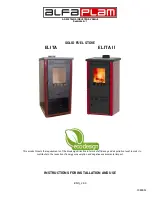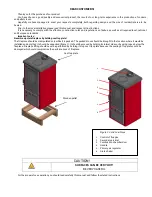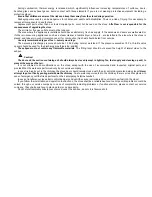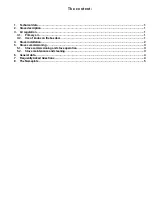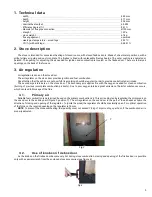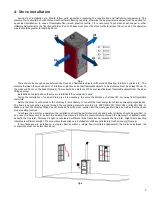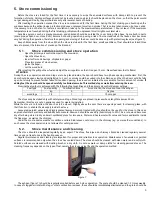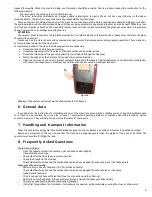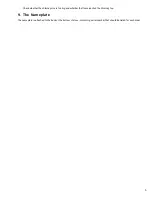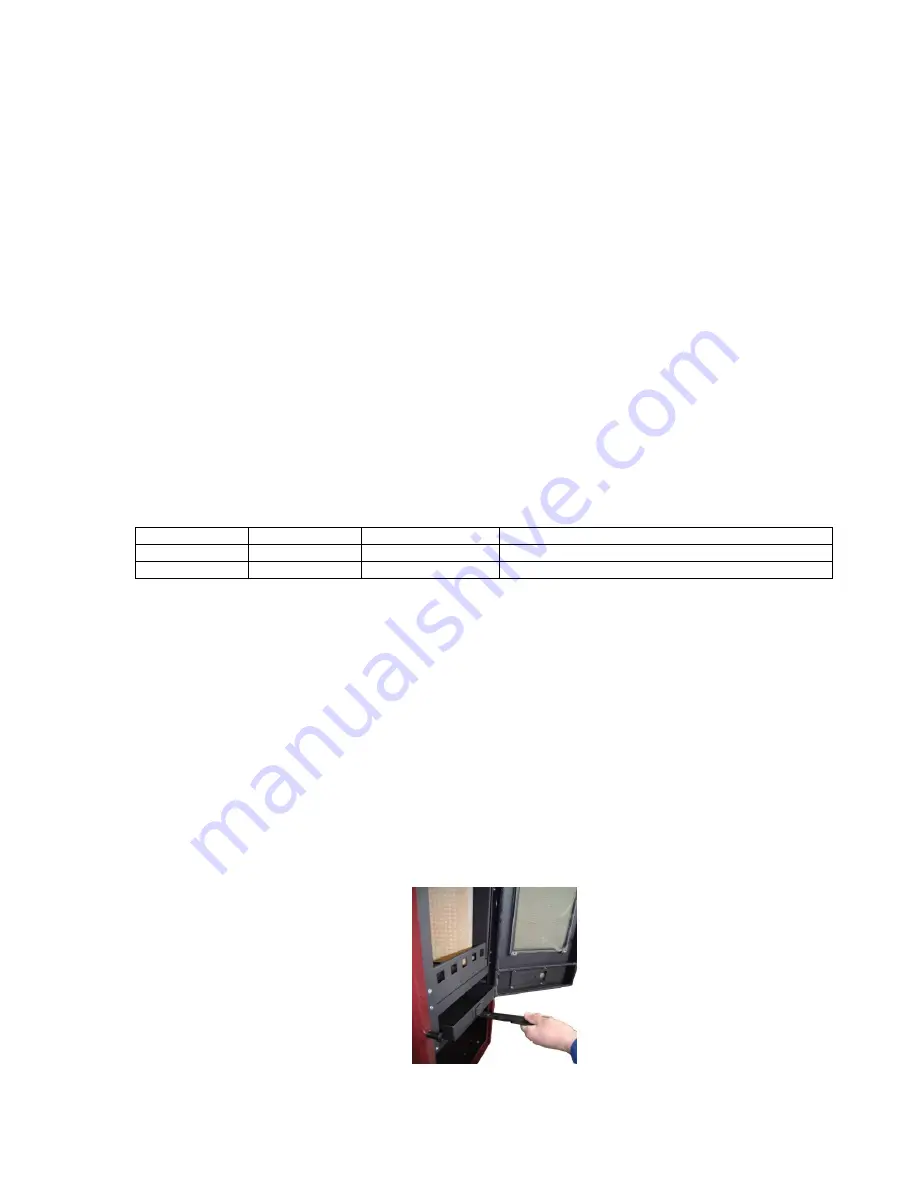
3
5.
Stove commissioning
Before the stove is stoked for the first time it is necessary to wipe the enameled surfaces with damp cloth to prevent the
formation of stains. Painted surfaces should not be touched and no objects should be placed on the stove, so that the paint would
not get damaged. Finally, the paint hardens only after several hours of heating.
After reading the operation manual, the stove is commissioned for the first time. During the first stoking you should open the
windows because the anticorrosive protection produces unpleasant smell and smoke. That is normal phenomenon, but soon ends.
If necessary, turn on the fan for faster air circulation. Stoke up to the maximum temperature load, 1 hour at least. If the maximum
temperature is not reached during the first stoking, problems with unpleasant smell might occur later also.
Sensitive persons such as pregnant women and children should be outside the room during this phase. Some built-in parts
(drain pipe, ashpan door, stove door) become hot during operation, posing a risk of burns. Handrail on the firebox door becomes
very hot during the operation, therefore the opening and closing of the door could be done only with protective gloves (see figure 7).
Keep children away from the stove. When the stove is stoked for the first time, small quantities of fuel should be stoked three
times to prevent the formation of cracks on the firesand.
5.1.
Stove commissioning and stove operation
- Open the primary air control damper to the maximum,
- Open the stove door,
- Insert soft wood shavings, chipboard or paper,
- Place two pieces of wood across,
- Ignite the paper,,
- Let the wood burn
After creating the grill, put new fuel and adjust the air regulator so that it is open 15 mm.. Never feed new fuel to flame!
ATTENTION
During the stove operation and wood logs are to be placed inside, the door should have two-phase opening mechanism: first, the
door should be open slowly and partially (up to 3 cm), so smoke could be sucked into the chimney, and then the door could be fully
open, but slowly to prevent ember fallout. At sudden opening, the stove door initiates the movement of certain amount of smoke. If
adding fuel, the door should be opened carefully to eliminate smoke. This method stops smoke from entering the room.
Nominal heat output is achieved with the following fuel quantities and the primary air control damper settings.
Fuel type
Fuel quantity
Combustion time
Air control on the stove door near the ashpan
kg
h
Degree
wood logs
1,8
1
15 cm open
The stove may be stoked only with natural wood logs. Wood logs are placed in pieces whose length measures 32 cm.
Remember, this stove is not an appliance used for waste incineration.
While the stove is in function, the door has to be closed. Slightly above the door there are openings used for cleaning glass, with
their function to enable the air supply inside the stove.
Lacquered, painted, veneered and impregnated firewood or wood treated with glue should not be used for the stove. In this case
any manufacturer's warranty and liability become void. Firewood should be used dry (humidity up to 20%). As a rule, wood becomes
dry after being stored in dry and well-ventilated place for two years. Wet wood has low calorific value and forms sediments inside
the flue pipes, as well as the chimney.
Under the most adverse weather conditions certain hindrances could occur in the chimney (eg. poor weather conditions). In
such cases the stove operation is not allowed for safety reasons.
5.2.
Stove maintenance and cleaning
The stove should be inspected regularly by an expert. The stove, flue pipe and chimney should be cleaned regularly several
times a year, at least once in the heating season.
Regular maintenance and cleaning are important for proper and reliable stove operation. Maintenance of enameled or painted
surfaces is recommended only when the stove has cooled down. The stove should be cleaned with clean water and a soft cloth.
Painted surfaces are cleaned with dusting brush or a dry cloth. Do not use water or damp cloths for cleaning painted stoves. The
cleaning frequency depends on the type of fuel, namely the stove service life and the operation method.
Figure 7
The ashpan (figure 7) should be regularly emptied before each stove operation. The grate should be cleaned 1-2 times weekly.
In case of clogged air inlet with slag or other combustion residues, these should be immediately eliminated and the grate should be

